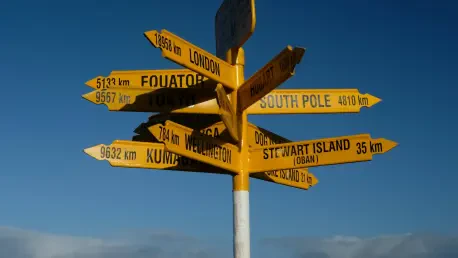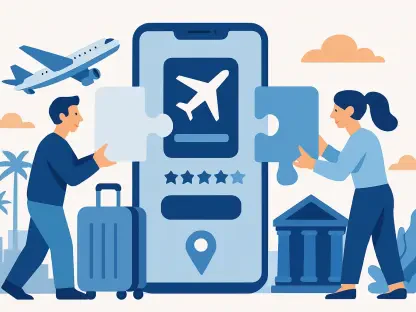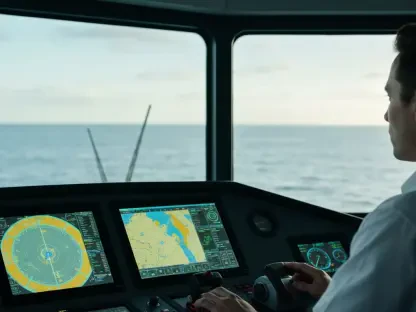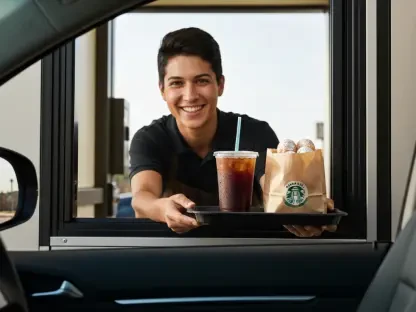In the digital age, social media has significantly transformed how destinations are marketed, emerging as a crucial driver in the travel industry’s evolution. The global market for social media-driven travel is witnessing exponential growth, presenting a profound shift in how travel destinations are promoted and perceived. This transformation is propelled by the dynamic interplay of influencer marketing, user-generated content, and the versatile tools offered by platforms like TikTok, Instagram, and YouTube.
The Impact of Influencer Marketing
Influencer marketing has become a cornerstone of modern travel promotions, currently valued at $32.55 billion. Influencers, armed with their personal touch and vast followings, provide authentic and engaging content that resonates well with their audiences. Instead of traditional advertisements, travelers now seek real-world experiences shared by relatable individuals, which leads to trust and higher engagement.
One of the standout features of influencer marketing is its authenticity. Authentic, user-generated content (UGC) is now more valued and trusted by travelers than polished brand advertisements. By sharing genuine experiences and insights, influencers bridge the gap between the brand and its audience, creating a more personal connection. This shift in marketing dynamics has had profound implications for how destinations craft their promotional strategies, focusing more on personal storytelling and authenticity.
Several successful campaigns have demonstrated the significant impact of influencer marketing. For example, partnerships between travel organizations and influencers help highlight specific aspects of a destination, whether it be culinary hotspots, cultural heritage, or outdoor activities. These collaborations bring diverse and personalized content to the forefront, making destinations more attractive to various traveler demographics.
Campaign Case Studies
One remarkable campaign by the Japan National Tourism Organization (JNTO) focused on exploring Japan’s lesser-known destinations and bringing them to the limelight. By partnering with Canadian influencers, JNTO created a series of personalized content that highlighted unique cultural experiences in Japan. Outdoor adventurer Scott Bakken showcased family-friendly outdoor activities, creating an appealing narrative for families seeking adventurous yet child-friendly destinations. Food lover extraordinaire Katie Cung highlighted Japan’s culinary hotspots, attracting food enthusiasts and culinary tourists. Cultural enthusiast Tiffany Lai delved into Japan’s spiritual and historical sites, engaging those with a keen interest in cultural heritage and history.
Another innovative campaign was Promperú’s effort to position Peru as a top destination beyond the famous Machu Picchu. By collaborating with influencers on TikTok and Instagram, Promperú shone a spotlight on lesser-known regions like the Ica Valley and Colca Canyon. The use of Instagram stories, Reels, and TikToks facilitated a virtual travel experience, immersing followers in visually rich content and creating a sense of adventure. This campaign not only drew attention to unexplored parts of Peru but also showcased the potential of social media in broadening the appeal of a destination.
Beyond Visuals to Interactive Content
OnePlus X See Monterey represents a perfect blend of technology and travel, capturing California’s scenic beauty through the lens of state-of-the-art smartphones. Featuring stunning visuals of Monterey Bay and Big Sur, the campaign collaborated with photographers using the OnePlus 12 Hasselblad camera. The images and videos shared on Instagram and YouTube highlighted the powerful combination of high-quality visuals and immersive storytelling.
South African Tourism’s campaign took a different approach by using an interactive quiz to engage potential travelers. The “Discover Your South Africa” campaign created personalized itineraries based on participants’ travel personas, derived from their responses to various images and prompts. This interactive method increased engagement and bookings, proving that customized content can effectively drive interest and action in destination marketing.
Meanwhile, Visit the Outer Banks utilized precise social media strategies to counter an off-season slump in tourism. Their high-impact visual content and precision-targeted ads maintained interest throughout the year. This strategy significantly boosted off-season engagement and conversions, highlighting the importance of strategic content planning in managing seasonal variations in tourism demand.
Lastly, the Voyage Privé x Clark campaign emphasized last-minute luxury travel deals. Influencers shared compelling stories via Instagram Stories, driving substantial traffic and engagement. The urgency created by limited-time offers combined with luxurious travel experiences resonated well with audiences who seek spontaneous adventures.
Overarching Trends in Social Media-Driven Travel Marketing
The undeniable impact of influencers in driving engagement and growth in destination marketing is a standout trend. Influencers’ personalized narratives create authentic connections with audiences, fostering trust and engagement. They bring credibility and relatability to marketing campaigns, making destinations appealing to a broad range of travelers.
User-generated content has become integral to successful marketing campaigns. Authentic travel stories and experiences shared by real individuals are more relatable and trusted by audiences than traditional advertisements. This shift towards genuine, experiential content has resulted in higher engagement rates and a more significant impact on travelers’ decision-making processes.
Social media platforms like TikTok, Instagram, and YouTube have established themselves as essential storytelling tools in destination marketing. Each platform offers unique features—TikTok’s short-form videos for quick engagement, Instagram’s visually captivating stories and Reels, and YouTube’s detailed travel vlogs and guides—that allow for versatile content presentation and broader audience engagement.
Interactive elements such as quizzes and personalized itineraries have proven effective in engaging potential travelers. Campaigns that offer customized content based on user preferences encourage more involvement from the audience, leading to higher shares and increased bookings. This trend toward interactivity has added a new dimension to destination marketing, making it more engaging and user-centric.
Strategic content planning and targeting are crucial components of successful campaigns. Tailored content approaches and advanced audience targeting ensure that marketing messages reach the right audience, enhancing engagement and conversion rates. By carefully planning content creation and distribution, destination marketers can optimize their reach and impact.
Synthesis and Future Considerations
In today’s digital era, social media has dramatically changed the way destinations are marketed, becoming a key force in the travel industry’s progress. The influence of social media on travel is experiencing significant growth worldwide, marking a major change in how travel destinations are advertised and viewed. This shift is largely driven by the impactful combination of influencer marketing, user-generated content, and the diverse range of tools provided by platforms such as TikTok, Instagram, and YouTube.
Influencers, with their large followings, play a crucial role in shaping travel trends and decisions. They offer authentic experiences and reviews, which potential travelers find more trustworthy than traditional advertising. Meanwhile, user-generated content, such as photos, videos, and reviews shared by everyday travelers, adds a genuine and relatable touch to destination promotion, making it more appealing to potential visitors.
Platforms like TikTok, Instagram, and YouTube have revolutionized the way travel content is created and consumed. TikTok’s short and engaging videos, Instagram’s visually captivating posts and stories, and YouTube’s detailed vlogs and travel guides provide a comprehensive and immersive experience for users. These platforms not only help promote destinations but also enable travelers to share their experiences and inspire others. This dynamic interaction between influencers, users, and social media tools continues to drive the evolution of the travel industry.









